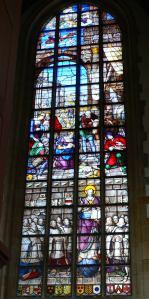Glass in the early modern period was a boundary object, made, and used by hybrid experts: it was used widely for utensils and optic aids, in architecture, furniture, scientific instruments, anatomy, and for decorative art works ranging from stained glass windows to coloured mezzotints, fake gems, and ornamental glasses. The production of glass was rooted in a variety of epistemic fields such as knowledge of materials and techniques, natural history, alchemy, and optics. In the past decade, significant work has been done on the history of optics, microscopy, and luxury glass. Yet the production and circulation of stained and coloured glass has remained underexposed so far. This project focused on the impending disappearance of the knowledge of, and techniques and facilities for the production of stained glass in the Dutch Republic between 1650 and 1795, and on attempts to maintain and revive them.
The project aimed to investigate how Dutch painters, glass painters, bottle manufacturers, patrons, apothecaries, and chemistry professors understood, categorized, and exchanged the knowledge required for the creation of colored glass, and how these processes changed between 1650 and 1795. Analysis of changes in the production of stained glass in the Dutch Republic in this period gave insights in the networks of glass craftsmanship, scholarship, artisanal knowledge, and patronage, and reveals a period of intense change, but not decline. This project served as a case study in Marieke Hendriksen's research on the recycling and re-appropriation of alchemical ideas and techniques in new theories and practices.
See e.g., Schickore, Jutta. The Microscope and the Eye: A History of Reflections, 1740-1870. Chicago: The University of Chicago Press, 2007; and Dupré, Sven. “Trading Luxury Glass, Picturing Collections and Consuming Objects of Knowledge in Early Seventeenth‐Century Antwerp.” Intellectual History Review 20 1 (2010): 53–78.

